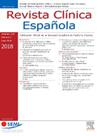Estudio ecológico para estimar la prevalencia de pacientes con déficit de esfingomielinasa ácida en España. Estudio PREVASMD
IF 1.7
4区 医学
Q2 MEDICINE, GENERAL & INTERNAL
引用次数: 0
Abstract
Background and objective
Prevalence studies of acid sphingomyelinase deficiency (ASMD) are scarce and different in Spain. The objective of the present study was to determine the estimated prevalence of patients diagnosed with ASMD (types A/B and B) in Spain.
Material and methods
PREVASMD was a descriptive, multicenter, and ecological study involving 21 physicians from different specialties (mainly Internal Medicine, Pediatrics and Hematology), of different autonomous communities, with experience in ASMD management.
Results
Between March and April 2022, specialists were attending a total of 34 patients with ASMD diagnosis, 10 pediatric patients under 18 years of age (29.4%) and 24 adult patients (70.6%). The estimated prevalence of patients (pediatric and adult) diagnosed with ASMD was 0.7 per 1,000,000 inhabitants (95% confidence interval, 95% CI: 0.5-1.0), 1.2 per 1,000,000 (95% CI: 0.6-2.3) in the pediatric population and 0.6 per 1,000,000 inhabitants (95% CI: 0.4-0.9) in the adult population. The most frequent symptoms that led to suspicion of ASMD were: splenomegaly (reported by 100.0% of specialists), hepatomegaly (66.7%), interstitial lung disease (57.1%), and thrombocytopenia (57.1%). According to the specialists, laboratory and routine tests, and assistance in Primary Care were the most relevant healthcare resources in the management of ASMD.
Conclusions
This first study carried out in Spain shows an estimated prevalence of patients of 0.7 per 1,000,000 inhabitants: 1.2 per 1,000,000 inhabitants in the pediatric population and 0.6 per 1,000,000 inhabitants in the adult population.
一项生态学研究,估计西班牙酸鞘磷脂酶缺乏症患者的患病率。研究PREVASMD
背景与目的酸性鞘磷脂酶缺乏症(ASMD)的患病率研究在西班牙缺乏且存在差异。本研究的目的是确定西班牙诊断为ASMD (A/B型和B型)的患者的估计患病率。材料和方法sprevasmd是一项描述性、多中心、生态学研究,涉及来自不同自治区不同专业(主要是内科、儿科和血液)的21名具有ASMD管理经验的医生。结果在2022年3月至4月期间,专家共接诊了34例ASMD患者,其中18岁以下儿童患者10例(29.4%),成人患者24例(70.6%)。诊断为ASMD的患者(儿童和成人)的估计患病率为每100万居民0.7例(95%置信区间,95% CI: 0.5-1.0),儿科人群为每100万居民1.2例(95% CI: 0.6-2.3),成人人群为每100万居民0.6例(95% CI: 0.4-0.9)。导致怀疑ASMD的最常见症状是:脾肿大(100.0%的专家报告)、肝肿大(66.7%)、间质性肺疾病(57.1%)和血小板减少(57.1%)。专家认为,实验室和常规检查以及初级保健援助是ASMD管理中最相关的医疗资源。在西班牙进行的第一项研究显示,患者的患病率估计为每100万居民0.7例:儿童人口为每100万居民1.2例,成人人口为每100万居民0.6例。
本文章由计算机程序翻译,如有差异,请以英文原文为准。
求助全文
约1分钟内获得全文
求助全文
来源期刊

Revista clinica espanola
医学-医学:内科
CiteScore
4.40
自引率
6.90%
发文量
73
审稿时长
28 days
期刊介绍:
Revista Clínica Española published its first issue in 1940 and is the body of expression of the Spanish Society of Internal Medicine (SEMI).
The journal fully endorses the goals of updating knowledge and facilitating the acquisition of key developments in internal medicine applied to clinical practice. Revista Clínica Española is subject to a thorough double blind review of the received articles written in Spanish or English. Nine issues are published each year, including mostly originals, reviews and consensus documents.
 求助内容:
求助内容: 应助结果提醒方式:
应助结果提醒方式:


